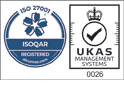The Persistence of the IoT in the Coming Years
The Internet of Things talks about the connection of objects with each other and to humans over the Internet. Cars, Lights, Air Conditioners, and other appliances can all be associated with the IoT. In the post-pandemic period; the IoT industry has started developing. It has shifted its priorities and is aiming towards keeping people healthy and safe. They are finding smarter protocols with the help of technology.
Many organizations are facing difficulties due to the pandemic but it has also helped them move towards IoT innovations. It has also accelerated the development of novel use cases. Organizations have applied this technology in their systems. They track people’s movement, vehicle movements, and goods transfer. They have also implemented AI and networking.
Top highlights of the use of the IoT during a pandemic
- Healthcare IoT has become the focus due to the pandemicIoT technology will be the biggest boon for the healthcare sector in the coming years. The early phase of the pandemic has stressed healthcare monitoring. This has become more relevant in the last two years. One of the biggest capabilities of IoT is patient monitoring. This helps in improving the quality of patient care. It also helps to diminish the costs of healthcare. The healthcare providers might also use robotics. This will help with routine processes like consumables transport and patient monitoring.When AI is combined with IoT, it gives better insight into the healthcare sector. Many organizations combine the IoT data from various sources and apply the AI model to this data. It helps to predict health threats or machine failures. Healthcare facilities have employed emerging technologies like UV LED lights. These lights help to destroy surface pathogens. IoT sensors also track use of the emerging technologies. This helps to stop infection spread.
- IoT gives opportunities to grow under pandemicThe pandemic has shown the organizations how to use these IoT devices which help to improve services. Many healthcare organizations have explored facilities. The ways to use IoT devices to manage and prevent the spread of an outbreak are explored as well.Improved tele-medicine and remote monitoring sensors have given healthcare providers a chance to minimize healthcare workers. This reduces contact with infected patients. But there is no impact on patient care. IoT sensors track the movement of people and equipment across the healthcare industry. RFID-tagged products help to manage supply deficits and surpluses effectively. Healthcare personnel uses this technology for contact tracing. It helps to keep a track of the individuals who come in contact with the disease.
- The surge in remote workingA huge part of the working population has shifted to work-from-home, unsupervised workplaces, and devices. Personal IoT devices for health have become an urgent need for organizations. They are trying to address the potential security issues.The employees use personal desktops and laptops to work from home, shopping, banking e-learning, and entertainment. Thus, the devices access work files and share the same network as the smart home devices. This increases the potential for attack from hackers. Device vulnerability on a home network also puts the devices at risk. This also includes the users that connect to the professional network.
With empty offices and business operations continuing with small crews, many technologies like smart buildings have started running. Other technologies like environmental controls, security cameras have also taken over. Industrial IoT sensors can become unnoticed and enterprises need to work towards this problem. Organizations have started considering adding network segmentation and AI which will help to identify threats. They are also looking towards network access controls to add devices to the work networks.
- Process IoT data with Open-source platforms There has been an increasing role of IoT analytics in data streaming AI and machine learning platforms. The huge amount of data that is IoT-generated will make organizations turn to machine learning algorithms. This helps in the real-time data processing. It helps in patient monitoring, predictive maintenance, and autonomous vehicles.
- Increasing IoT use cases with Network AdvancementsThere has been an advent of 5G private networks. It helps organizations to use IoT in isolated and remote locations. In these locations, the data should send without huge investments in the infrastructure. This technology brings in new capabilities like customizable rules for built-in security, low latency. This also enables 5G to substitute other networks in use cases. Augmented reality products will need low latency that is offered by the 5G offers.
Synopsis
The applications of IoT technologies are many. Its ‘practically adjustable to almost any technology’ property has made it capable of providing relevant information about its operation. It can inform about the performance of an activity. Also, it can tell us about the ecological situations that are needed to be monitored.


